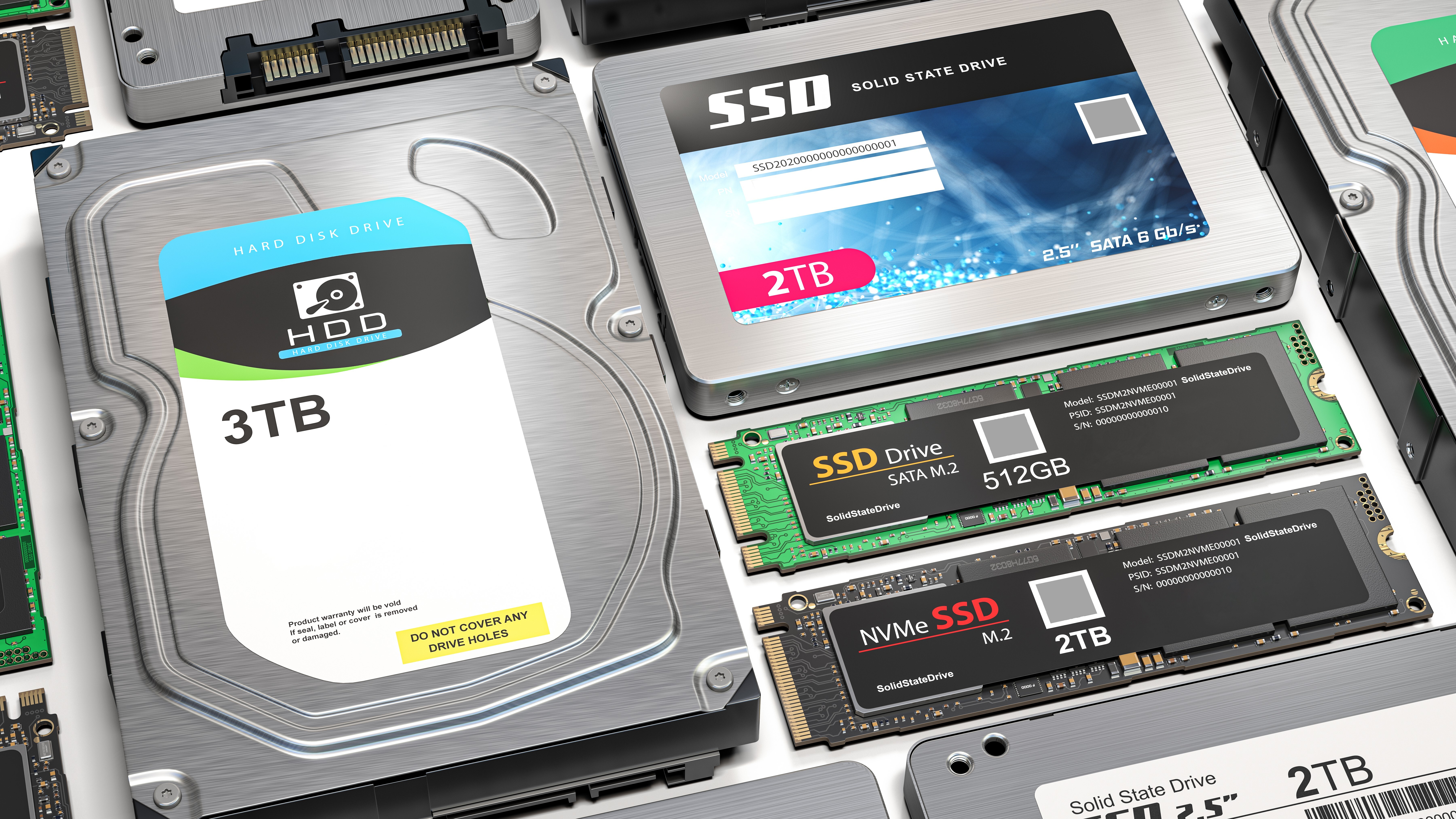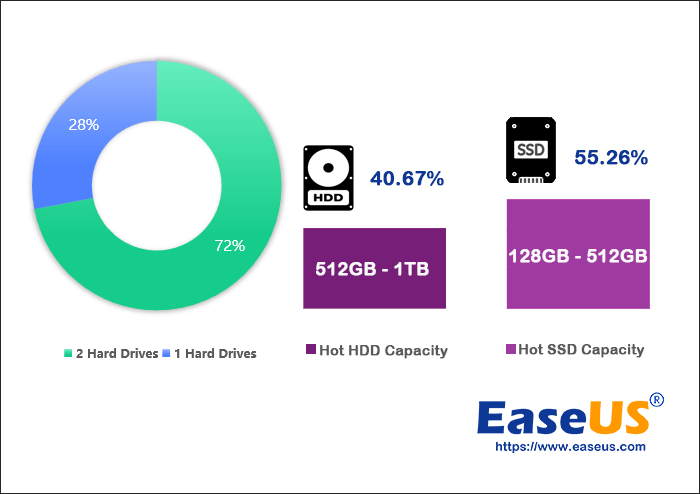
Not everyone buys the best SSDs or the best HDDs for their systems. EaseUS, a software company specializing in data backup, recovery, and disk management, has shared the results from two storage surveys that reveal the hottest brands and capacities among consumers and how they use their drives.
For the EaseUS Disk Drives Stats 1 report, the company surveyed 207,797 users over the three previous months. The results are based on 754,142 drives consisting of 346,477 SSDs, 200,818 hard drives, and 206,847 USB pen drives.
The first trend that EaseUS noted was that SSDs continued to gain popularity over hard drives. According to the data, SSD owners accounted for 45.94% of drives, almost double that of HDD users with 26.62% participation. Meanwhile, the other 27.43% corresponded to USB pen drives.
SATA and NVMe are the most popular interfaces, which is no surprise. But despite NVMe being faster, SATA remains dominant with a 36.59% usage over NVMe's 17.64%. Curiously, 2.92% of the surveyed users still used the legacy IDE interface. There are also 36.5% lumped together under the nebulous "other" category, however, which likely includes all the USB drives.
The choice of capacity varies significantly between SSD and hard drive users. For SSDs, the 256GB and 512GB capacity range was the preferred choice for 28.96% of the users, with the 128GB to 256GB range came in second at 26.3%. For HDDs, 40.7% of the user base used a 512GB to 1TB hard drive, 20.93% had a hard drive between 256GB and 512GB in size, and only 14.1% chose hard drives between 1TB and 2TB capacity. Again, however, there's a large 10.3% of SSD users in the "other" category — for anything less than 64GB or more than 1TB. Likewise, 24.3% of HDDs were either less than 256GB or more than 2TB
The survey indicated the top three SSD brands were Crucial, Kingston, and Samsung. The most prevalent drives include the Crucial MX500 (500BB), Kingston A400 (240GB and 480GB), Samsung 980 Pro (1TB and 2TB), Samsung 970 Evo Plus (1TB), and Samsung 860 Evo (500GB). HDD owners favored Seagate, Toshiba, and Western Digital, specifically the Seagate Barracuda, Toshiba DT01ACA100, and WD Blue, all three in their 1TB variants. Kingston and SanDisk led the survey in terms of USB pen drives.

EaseUS presented its findings for the second quarter of 2023 in the EaseUS Disk Drives Stats 2 report. The company examined 336,058 drives (205,889 SSDs and 130,169 hard drives) from 207,797 users. Approximately 36.81% of the user base has two drives in their systems, whereas 28.02% stick to a single drive. Only a small percentage (3.56%) of users have six or more drives.
As expected, most people use and SSD as the primary drive, and a secondary drive for storing data. EaseUS discovered that 74.19% of its users employ an SSD as a primary drive, and only 25.81% still use a platter drive. SSDs deliver significantly higher performance than a hard drive for everyday tasks, including booting the OS and loading other applications.
Space allocation on the primary drive (C drive, as EaseUS calls it) differs a bit between SSD and hard drive owners. 33.17% of SSD owners allocate between 128GB and 256GB for the primary drive, while 31.38% of hard drive owners assign a capacity between 256GB and 512GB. Meanwhile, 57.41% use a GPT (GUID Partition Table) for their drive, while the older MBR (Master Boot Record) disk type makes up the remaining 42.59%.
The last part of the survey clearly shows that users are still reluctant to upgrade to Windows 11. Windows 10, which came out eight years ago, continues to be the fan favorite. The results showed a 51.31% attachment to Windows 10, with another 11.71% using Windows 10 64-bit (we suspect most of the first is still using the 64-bit version, but it just didn't explicitly identify itself as such). By comparison, only 28.26% of users were on Windows 11. Windows 7 and 8.1 mostly fill out the remainder, with a few Windows Server users also present.







